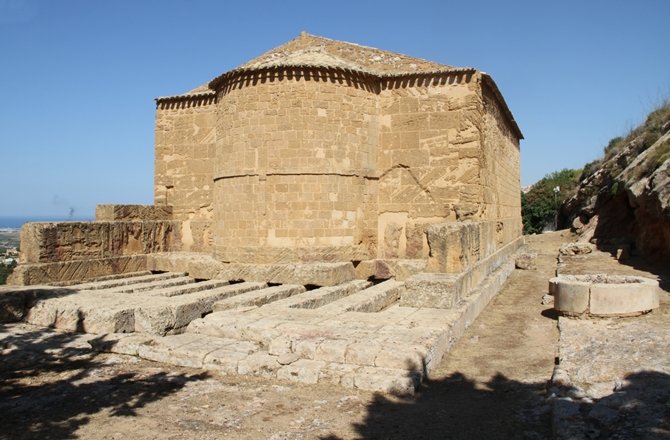
© Discovery News
A new survey of the Valley of the Temples just outside Agrigento, Italy, reveals the 2,500-year-old temples were not deliberately aligned to the rising sun, as generally believed. A variety of factors, not all of them being astronomical, inspired the ancient architects.
"Alignment was widely determined by urban layout and morphological aspects of the terrain as well as religious connections," Giulio Magli, professor of archaeoastronomy at Milan's Polytechnic University, told Discovery News.
Magli and colleagues Robert Hannah, at the University of Waikato, New Zealand, and Andrea Orlando, at the Catania Astrophysical Observatory, conducted the research with funding from the Ente Parco della Valle dei Templi. Their findings are published on the Cornell University physics Web site,
arXiv.org.
Known as the temple of Demeter and Persephone, the shrine is among a World Heritage-listed collection of temples that once stood in full glory in Akragas, later to be called Agrigento.
"One can only imagine the spectacle at the temple. The full moon near the winter solstice - the longest night of the year - culminates very high in the sky and remains in the sky the longest," Magli said.
Akragas was one of the most important Greek colonies in Sicily, and the homeland of the philosopher Empedocles (490 - 430 BC).
Empedocles was the first to divide matter into the four elements of earth, fire, water and air. He also observed that the moon shines with light reflected from the sun.
Today the Valley of the Temples consists of the remains of 10 Doric temples dedicated to Greek gods, goddesses and heroes such as Heracles, Olympic Zeus, Demeter and Persephone, Juno, Concordia, Vulcan, Aesculapius.
Their orientation, as well that of all Greek temples, has been debated for nearly two centuries. Academics wondered whether they were aligned with astronomic events like the sunrise on specific days of the year.
Magli and colleagues measured the alignment of all the Greek temples in the valley, and showed that at least four of them are orientated in accordance with the town's grid along the cardinal directions — irrespective of the solar date to which they would match due to the horizon.
"For such temples, only a general rule imposing the facade towards the eastern horizon was applied. However, they were not orientated toward the rising sun on specific days of the year," Magli said.
One of the shrines, the temple of Juno, was aligned to the stars in the Delphinus constellation.
On the contrary, the temple of Zeus, one of the largest temples of the Greek world before earthquakes and Carthaginian raids, was orientated topographically in accordance with the street grid.
"Incredible as it may seem, we have been unable to find this simple explanation in the literature," the researchers wrote.
Now incorporated in the Medieval church of San Biagio, the temple of Demeter and Persephone is preceded by a fountain sanctuary with sacred caves where votive deposits, including a statuette representing Persephone, were found.
Persephone and her mother Demeter, the goddess of nature, were the key figures in the Eleusinian mysteries representing the myth of Persephone, who was abducted by Hades to be his wife in the underworld.
The mysteries celebrated Persephone's reunion with her mother, in a cycle with three phases, the "descent," the "search" and the "ascent."
"We know very little about the relationship between astronomy and those secret religious rites. A connection with the moon-orientated temple is possible and will be at the center of further research," Magli said.
The attribution of the temple to Demeter and Persephone was also confirmed by the presence of two small circular altars located in a corridor formed between the rock cut to the north and the side of the temple.
One altar has a central well, known as bothros, which was found filled with broken kernoi, or ritual vessels of Demeter.
A relatively large esplanade can be found on the back of the temple. It was obtained artificially through the construction of huge retaining walls on the south side and an accurate excavation and leveling of the rock on the north side.
"We can imagine a nocturnal procession coming up from the fountain sanctuary and reaching the temple, in front of which, however, there is not enough space to house worshipers," Magli and colleagues said.
They speculate that after people ascended to the temple, people crossed the corridor between the north side of the temple and the hill, perhaps throwing offerings in the central well.
"Then they gathered in the vast esplanade on the back of the temple. From there, they would have witnessed the spectacle of the full moon high over the hill of the acropolis," Magli said.
Reader Comments
to our Newsletter